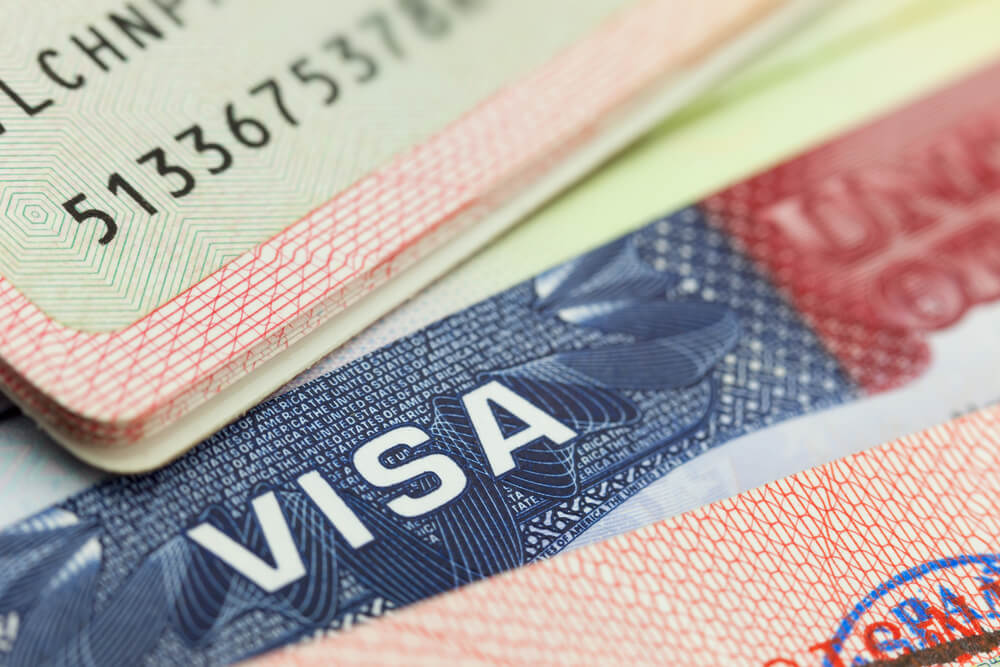How to change the status if you come to the US and want to stay for a long time
Getting a visa to the USA is quite difficult. Getting the type of visa you want is even more difficult. For applicants from the CIS countries and some countries of Eastern Europe, a positive outcome of the interview at the embassy is a real achievement. The most popular visa is B1/B2, which is used for tourism and business trips. There is also a high level of requests for the so-called transit visa. And another of the top popular visas is the J-1 study visa for exchange programs. Each of the above types of visas has a time limit that limits a single stay in the United States. The standard maximum period of a visit on a tourist visa is 6 months (if the officer at the border didn’t like you for some reason, even less). In the case of a J-1 visa, a two-year ban on entry into the United States after the end of the program may also apply. But neither the first, nor the second, nor any other circumstance prevents visitors from staying in the United States for a much longer period. How? Through a change of status.

Фото: Depositphotos
According to official statistics on the US Immigration Service website, the number of requests for a shift or extension of the current status practically does not change from year to year. On average, USCIS receives about 200 000 of such applications annually. About 80% of them are approved. It is not surprising that the topic of status change does not lose popularity and always raises many questions.
What status can be obtained by arriving in the USA, for example, with a B1 / B2 visa? The answer is student status, which will allow you to stay in the country while you are studying at an ESL school or college. How long can this status be extended? Officially, before 8 years. But even here there are exceptions.
If you competently build your curriculum, starting with the simplest language school, and eventually go to college, you can study, study and learn ... True, this process is far from cheap and, in fact, does not lead anywhere. But more on that below.
Changing student status is not so difficult. The main thing is to prove to the Immigration Service that you only need a status for a while due to changed circumstances.
Most often, such a reason applicants call the desire to learn English. The applicant needs to state such a desire in a motivational letter, and this letter always looks fairly standard: ... Arrived / came to the United States to rest, and how I became / began to communicate - I understood / understood that there were practically no language skills. And English is simply vital for my further study / career / travel (underline the necessary). Naturally, one letter of motivation is indispensable.
It is very important to prove to an immigration officer who will consider your case, that you have something to lose in your own country and there is room to return to.
These can be real estate inquiries, availability of business and savings. Or a letter from an employer who promises to keep your job for the entire period of study. It is also important to provide proof that you have a permanent residence in your home country.
These may be bills to a specified address in your name, a certificate from the housing department, a lease (active, where you can see that you continue to pay for housing, even while temporarily staying in the US), a certificate of ownership of an apartment or house. And, most importantly, what you need to demonstrate is financial viability. Student status (F-1) does not entitle you to formal employment in the United States, so you should have an amount in your account that covers expenses for at least a year of study and residence in America.
Changing status through an ESL school, you must show at least $ 12 000 on your account. If there is no such money, the sponsor can be a sponsor who will need to provide financial documents about the availability of the required amount, as well as fill out an affidavit, a guarantee form, on providing financial support to a prospective student.
How much time does the whole process of status change take? The short answer will be: a lot. Or much more than it was two years ago.

Фото: Depositphotos
Attorney Claudette Delasern, whose office is located in the heart of Manhattan, has been helping her clients change their status for many years. Most often, her assistance is required if the case for some reason turned out to be more difficult than the applicant had originally intended:
“For example, the Immigration Service has asked for additional evidence, which is difficult to provide. Or the applicant has received a refusal and wants to challenge it,” says the lawyer. In 2017, Claudette was faced with letters from the Immigration Service demanding further evidence (ang Request for Evidence - author) became more difficult, and almost all applicants began to receive them. The main reason was the rule of April 6, 2017, requiring all those who want to change their status in the United States to maintain their current status while the case is being processed by USCIS (United States Citizenship and Immigration Services - auth.)
“In fact, maintaining the current status is not an innovation. Before the recommendation came out, this rule was already in effect, says lawyer Delaserna. - If you are waiting for any status, you need to keep the current status active. The difference is that previously the Immigration Service was not so strict. There was such a thing as waiting.
That is, if your application for a status change is pending, you are allowed to stay and wait.
This expectation was never 100% safe, because if something unexpected happened (for example, your application to change status was rejected), you would have no legal status at all. But now they (Immigration Service - author's note) are very strict on this matter. If you change status, you must also maintain your current status until your application is approved. But if your status cannot be renewed (for example, J-1), then you will need to submit another application to change status. This time to get temporary status. And it turns out that the B-2 is the only option in this case,” Claudette describes the situation.

Counsel for Claudette Delasern. Photo medium.com
Those applicants whose case for changing status was under consideration at the time the new-old recommendation appeared on the USCIS website received a requirement to urgently extend their status, and also to explain why this was not done on time. Such an explanation had to be drawn up competently, indicating a clear and understandable reason. In such cases, the assistance of a lawyer was required. And maintaining your current status is far from the only thing that has become an urgent need for those wishing to obtain student status in the United States.
“If you look at the Immigration Service website, there is a fairly large number of documents that need to be attached to an application for change of status. Just two years ago, USCIS approved cases with far from a complete set of documents, without evidence of ties to the homeland, for example. Therefore it took less time. You could get a decision on your application in six months, or even less. But since last year, USCIS has become much stricter about cases of change of status.
In fact, nothing new was added to the process, but now it is impossible to get rid of simple documents from the school and Form I-539. The Immigration Service carefully processes each application and pays attention to each document. That is why it now takes longer to consider cases of change of status, from 9 months to a year or even more,” explains the lawyer.
Who can change the status in the US? Everyone who came to the country with a non-immigrant visa, except for a type D visa (members of foreign ship or flight crews), a transit visa C and a bride / groom's visa K. You cannot apply for a change of status and those who came to the United States without a visa ( the so-called ESTA or VWP countries whose citizens are allowed visa-free entry to the United States for up to 90 days).
You can not leave
J-1 and a two-year restriction on entry into the United States after the end of the program for changing status are not an obstacle. According to Claudette, this rule only works if the applicant plans to apply for a green card immediately after the program. “The J-1 is a nonimmigrant visa. This means that the holder of such a visa has no intention of remaining in the United States. Exactly the same as in the case of F-1 status. Therefore, by changing one nonimmigrant status to another, an applicant does not violate the two-year rule. It’s another matter if the contract with the sponsor who paid for the trip to the USA clearly stipulates the return of the program participant home. Then this sensitive issue will have to be resolved with the sponsor, and not with the US Immigration Service,” the lawyer assures.
Further, if the former J-1 visa holder with a two-year rule applies for immigration status (for example, a green card through marriage with a US resident or employment), this rule will be activated and you will have to return home for two years.
But sometimes the restriction can be challenged due to special circumstances. For example, because of the special medical indications of an American husband or wife who needs your constant presence and help.
Pregnancy of the American spouse can become such a circumstance. But the pretender's pregnancy on the green card is no reason to cancel the two-year ban on entry.

Фото: Depositphotos
“It may help if the J-1 visa holder's home country does not object to the person not returning home. There are countries that easily agree to accommodate the applicant, and there are those that are categorically against it,” says Delaserna.
In any case, according to the specialist, you can always try to challenge the restriction, because, in fact, you cannot forbid someone to do something after the program. Even if it is written that you must return home, you can fight for the right to stay.
Family row
What about those who come on a non-immigrant visa with their family members and want to change their status to a student one? In essence, the same rules work. One applicant is applied for status change, the rest are as (for lack of a better word) dependents. It is important to remember that for each of those who are indicated in the documents as a dependent, you will need to show an additional amount in the bank account of the applicant or his sponsor. For the rest, there will be no extra costs.
If the applicant's F-1 status is approved, all family members whose names were indicated in the documents for changing status will automatically receive F-2 status. Most often, if the documents are in order and there is evidence of close ties with the homeland, then the presence of family in the application for change of status has little effect on the decision.
“If you have prepared a complete package of necessary documents, which includes evidence of real estate, business and stable income in your home country, then obtaining F-status for an applicant with a family is no more difficult than for someone who applies alone. Of course, there is a subjective element here: much will depend on the officer who is considering the case. But the mere fact that you are applying with a family member is not a reason for refusal,” explains Claudette Delaserna.
No, thanks
That scary word is “refusal.” Despite the rosy statistics with 80% of approved cases for changing status, the remaining 20% of cases with a negative outcome is also a considerable number. Why does every fifth applicant for a change of status expect a “no” from the US Immigration Service? Most often, the reason is a “weak” package of documents from your home country.
When there is no business, no stable work, no real estate. Among other reasons, mistakes are made by both the school that provides the standard package of documents for applicants, and ... the Immigration Service itself. In this situation, there is a good chance to challenge the decision. Or rather, not to dispute, but to reopen the closed after the refusal case, providing new documents, which should convince USCIS to change the decision.
“We can draw up an official explanation for what happened. If it was the fault of the school, then it will take a lot of time to consider the case opened after the refusal, at least a year,” says the lawyer. “If the Immigration Service itself made a mistake - for example, by not seeing an important document that was, nevertheless, , sent to them, the case will be considered very quickly, within a couple of months.”
If the applicant was refused, because important documents were not delivered on time by mail, the chances of proving something and getting a review of the case are there, but they are small.
“You may have the postal item number that you used to track the envelope. Or an affidavit from the postal service confirming the loss of the letter - then you can fight. But, more often than not, it is difficult to achieve justice in this case,” says Delaserna.
The good news is that you can open a business after a refusal an infinite number of times. Bad is very expensive.
You will need to pay $ 675 to the Immigration Service to reopen the case. And it is important not to forget that while you are working on your student status, the temporary status will also need to be maintained. The extension every 6 months is another $ 370. Whatever happens, for whose fault you are not wasting (even if it will be three times the fault of the service itself), it is important to understand that USCIS does not return money. Never.

Фото: Depositphotos
What's next?
Remember, at the beginning of the article there was a warning that staying too long in the US for F-1 status is a road to nowhere? In fact, this warning concerns, first of all, those who extended their student status for several years while studying in a regular language school.
In the future, if the holder of this status has the opportunity to work in America, this may become a problem. You will have to explain in great detail to the Immigration Service what “kept” you in a simple language school for so long.
And vague or flimsy responses may jeopardize the receipt of such a desired green card. Fragmented, uneven study, when a student moved from school to college and back, can also be an obstacle to formal employment.
In any case, if there are plans to stay in the United States and eventually get a work visa or a green card, it’s better not to stay out on student status for a long time.
Student status and employment opportunities
Probably the most common question from those who are interested in student status in the United States: can one officially work as an American student? Yes, you can, but only on the campus of the school or college where you are a student. And only 20 hours per week.
It sounds like a good opportunity, but in fact it is very, very difficult to find such a side job. And certainly it is impossible to get a job from the first days of study. The competition for the opportunity to officially work among foreign students is very high, because along with the legal earnings comes SSN (social security number - author), insurance and the ability to at least partially (and sometimes completely) cover the costs of study.
If you don’t find work on campus, and you really need work, you can try to get permission to work outside of school.
To do this, according to a lawyer, will be difficult. It will be necessary to prove to the Immigration Service that you are no longer able to pay for training due to unforeseen circumstances.
“If in the middle of the semester, after several months of studying, an unexpected situation occurs - for example, something happened to the sponsor and he can no longer pay for you. Maybe the person who sponsored you has died. Or lost business. Then you can apply to the immigration office with a request to allow you to work off campus 20 hours a week so that you can pay for your studies, the lawyer explains. — There is an address on the website to which you can send a letter requesting permission to work off campus. And also evidence to support your words. This could be a death certificate for the sponsor or a bankruptcy document.”
According to Delasterna, consideration of such petitions takes a very long time and it is very difficult to obtain such permission. The review will take at least several months. And this can also cause your request to be rejected. After all, while the Immigration Service is working on your application, the semester will end and you, according to the logic of USCIS, will be able to return home.
All in your hands
For those who nevertheless decided to change the status, despite the duration and high cost of the process, the lawyer Delasserna gives some advice. First, always maintain legal status until you get approval for an F-1 application and become a student. Since a one-time extension is made only for 6 months, you should understand that, after this period expires, the status will need to be renewed again.
“Even if you have not received any response to your application to extend B-2 status, you are responsible for the timing. And before the expiration of the first 6 months, you must apply for a second extension. Of course, these are additional costs. But it’s still cheaper than reopening the case after a refusal,” explains the lawyer.
You can check at what stage your application for a status change is considered at the official Online US Immigration. It is not updated regularly, and sometimes you can get a notification in the mail before new information appears online.
If you urgently need to get the latest information on the process, you can try to fill out an application on the same website and ask a question that concerns you. But Claudette Delaserna does not recommend calling USCIS: you will not get through to the officer who is considering your case, and the Immigration Service employees answering phone calls are far from experts on your issue and may not know all the nuances.
“When you call the Immigration Service, especially on a number that starts with 800 numbers, you will not get through to an officer, but to the person answering the phone. Basically, the secretary. This person's job is solely to answer calls. And with a high degree of probability, this person will not be able to provide you with complete and reliable information (especially specific) in your case. Sometimes such calls can only create confusion and cause you to make a mistake. Of course, not consciously. But it’s still worth understanding this nuance,” the lawyer convinces.
And the last advice from a lawyer: remember what you said and what information you provided to the embassy when you applied for a visa. If the documents for the change of status information will diverge, it can greatly harm the process, and even completely lead to a refusal to provide you with student status.
Read also on ForumDaily:
The American Dream: Expectation and Reality
Marriage with an American: expectations and reality
How do illegal immigrants live in New York?
Ukrainian lied about his age to be adopted in the US
How to know if you will have problems at the US border
Subscribe to ForumDaily on Google NewsDo you want more important and interesting news about life in the USA and immigration to America? — support us donate! Also subscribe to our page Facebook. Select the “Priority in display” option and read us first. Also, don't forget to subscribe to our РєР ° РЅР ° Р »РІ Telegram and Instagram- there is a lot of interesting things there. And join thousands of readers ForumDaily New York — there you will find a lot of interesting and positive information about life in the metropolis.











